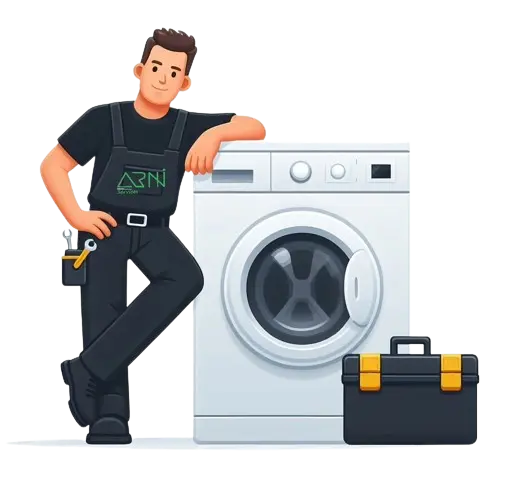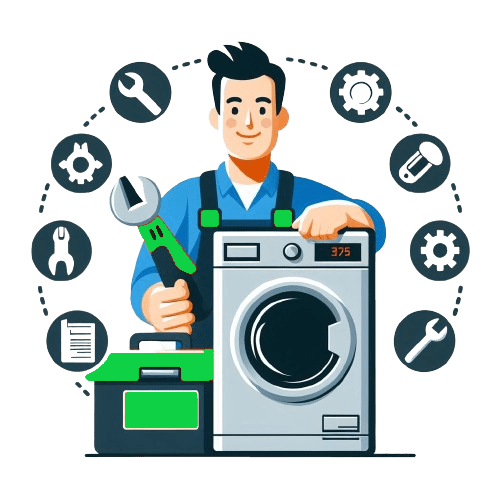Blog
Self-cleaning ovens are a big deal in kitchens today. They get super hot to turn food mess into ash. Just wipe it off later – easy, right?
But wait, there’s a catch. Using self-clean can be hard on your oven. It can wear out parts faster and might let out fumes that are tough on people and pets. Also, if your oven’s really dirty, it could smoke or even be a fire risk.
So, while self-cleaning ovens are super convenient, think twice before you use this feature. Sometimes, the good old manual clean is safer for your oven and your home.


A self-cleaning oven burns away food residue and leftovers at high temperatures. The standard cleaning cycle of a self-cleaning oven lasts for several hours, and it locks for security. When using the self-clean feature on your oven you can keep your oven clean without the need for toxic oven cleaning products.
In order to lower the risk of fire, self-cleaning ovens typically include more insulation than regular ovens. Additionally, the insulation lowers the amount of energy required for everyday cooking. Until the high temperature cleaning operation is finished, a self-cleaning oven is intended to remain locked. A mechanical interlock is used to keep the oven door locked and closed throughout and immediately after the three-hour high-temperature cleaning cycle in order to prevent any burn injuries. The door can often be opened once the temperature drops to about 600 °F (316 °C)
Self-cleaning ovens are seen to be more practical and time-saving, making them more economical. The high temperatures, however, cause them to create smoke and consume a lot of energy. an average 150 minute
The grease and crumbs in your oven are burned and reduced to ashes by a self-cleaning oven. The self-cleaning oven appeals to consumers because it seems simple, time-saving, and economical. But are self-cleaning ovens dangerous in any way?
Never leave anything on top of the surface while cleaning at a high temperature since some items may melt. Additionally, when cleaning, avoid blocking the oven vent.
Self-cleaning ovens are a big hit in modern kitchens, but they’re not without risks. Here’s what you need to know about the dangers of self-cleaning ovens:
Instead of always using self-clean, try other ways like manual cleaning or oven cleaners. If something goes wrong with your oven, it’s safer to call a pro for help.
So, while self-cleaning ovens are handy, it’s key to use them smartly and know the risks. Stay safe and enjoy your cooking!
Safety advice: When performing oven self-cleaning, it is advised to open windows and turning on vent fans, and make sure you have a functioning carbon monoxide detector in your home.

We come to you, view all service location areas
Self-cleaning ovens are great, but there’s no exact count of how often they cause problems. However, we often find that the self-clean feature is behind many repairs. So what can possibly go wrong even if you use the function correctly?
Locking Mechanism Fails: After self-cleaning, sometimes the oven won’t open. The lock gets stuck.
Blown Thermal Fuse: This can mess up how your oven heats. It’s a common issue after self-cleaning.
Burned Out Heaters: The intense heat can burn out the oven’s heaters.
Electronic Control Problems: The self-clean cycle can sometimes lead to failures in the oven’s electronic controls.
Remember, if you face any of these issues, it’s often best to call a professional. While self-cleaning ovens are convenient, they can sometimes lead to these headaches
Is the self-cleaning cycle of your oven a blessing or a burden? It’s a common question among homeowners. While some of our clients adore their self-cleaning ovens, others are wary. Here’s a look at the benefits:
Convenience: Self-cleaning ovens simplify cleaning. Just start the cycle and let the oven clean itself.
Better Cooking: A clean oven means better, more even cooking. Self-cleaning helps maintain a residue-free interior for optimal performance.
Less Manual Cleaning: Forget about hours of scrubbing. Self-cleaning ovens cut down on manual labor and the need for harsh chemicals, which can harm the oven’s surface.
Energy Efficient: A clean oven heats more efficiently, saving energy and reducing costs over time.
Safety: Regular self-cleaning reduces the fire risk from grease and food residue.
Enhanced Insulation: Self-cleaning ovens have extra insulation. This prevents heat loss during baking or roasting, making the oven more effective and economical.
In short, self-cleaning ovens offer a mix of ease and efficiency, keeping your oven clean and enhancing your cooking experience. Regular use of the self-cleaning cycle can minimize the need for manual cleaning, but it’s important to be aware of the potential issues that can arise with frequent use.
Cleaning your oven doesn’t always need the self-clean feature. Here are some effective methods:
Manual Cleaning: First, take out the racks and any loose bits. Use a degreaser and scrubber to tackle food and grease. Rinse well and dry.
Baking Soda & Vinegar: Make a paste with baking soda and water. Spread it inside the oven and leave it overnight. Wipe it off with a damp cloth, then use a water-vinegar mix for a final clean.
Commercial Oven Cleaner: These are made to cut through oven grime. Just follow the label instructions and use them in a space with good air flow.
Regular cleaning keeps your oven in top shape and extends its life. Choose a method that suits you to keep your oven ready for action.
Need to clean just the oven door glass? You might have to remove the door panel. Otherwise, you can leave it as is.
Getting the best out of your self-cleaning oven is easy with the right approach. Here’s how:
Quick Cleanup: If there are spills, clean them as soon as the oven cools down enough to be safe.
Avoid Commercial Cleaners: Don’t use commercial oven cleaners during the self-clean cycle.
Empty the Oven: Remove any bakeware, liners, or utensils before starting the self-clean cycle.
Rack Care: Check your manual for how to clean oven racks. Most should be removed during self-cleaning.
Timely Cleaning: Run the self-clean cycle before too much grime builds up. This keeps your oven in better shape and makes the process more effective.
When your oven breaks down, here’s what you can do:
Troubleshoot: First, try to figure out what’s wrong. Look at the oven’s manual or search online. It might be something simple, like a tripped circuit breaker or a power cord that’s come loose.
Check the Warranty: If your oven is under warranty, get in touch with the manufacturer. You could get the repair covered.
Professional Help: Can’t solve the problem or out of warranty? Contact us at ARNI Services. We’ll diagnose and fix your oven efficiently.
Consider Replacement: If repair costs are too high, think about getting a new oven. It might be more cost-effective in the long run.
By following these steps, you’ll find the best solution to get your oven working again, whether it’s a quick fix or a professional repair from ARNI Services.

Did your self-clean oven stop working right after a clean cycle? Or maybe there’s a burning smell in the oven that wasn’t there before? These are signs that something’s not quite right. If your oven will not turn on post self-clean or if you’re noticing anything unusual, it’s best to get professional help.
Why? Fixing a broken oven isn’t always straightforward. It could be electrical issues, something with the heating elements, or other complex problems. Trying to fix it yourself could make things worse or even be dangerous.
Our expert team specializes in sorting out all sorts of oven troubles. Whether it’s a stubborn burning smell, an oven that won’t heat up, or one that just won’t turn on after self-cleaning, we’ve got the skills to get it back in top shape. Plus, we understand ovens inside out, so you can trust us to handle yours with care.
Don’t let a broken oven disrupt your cooking. Give us a call and we’ll get your kitchen buddy up and running in no time!

If you have concerns about your appliance’s performance, contact the professionals at ARNI Services, Appliance Repair, for a thorough diagnosis and repair service. – you can’t put a price tag on peace of mind.